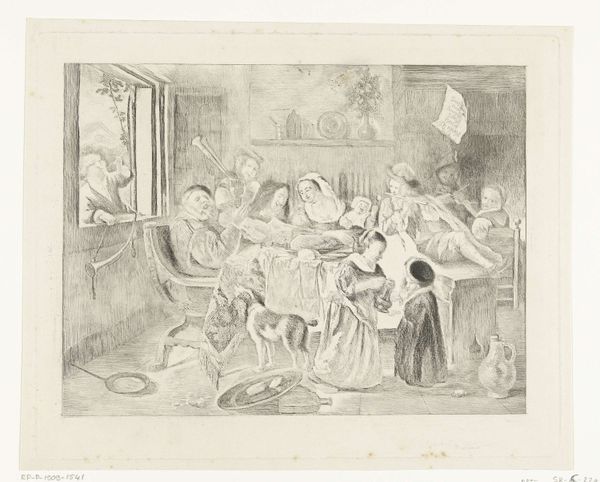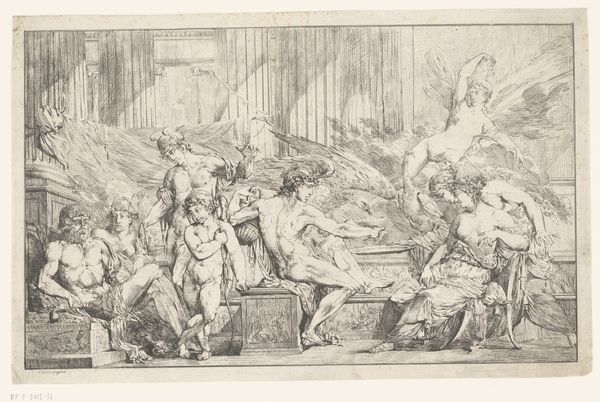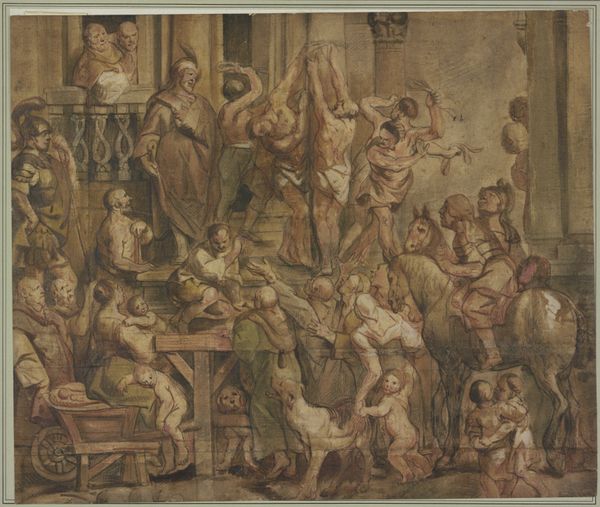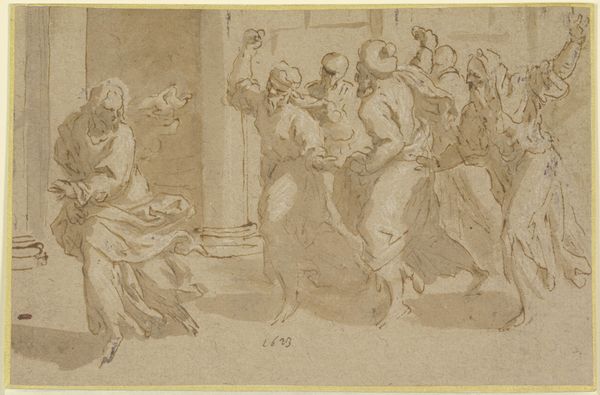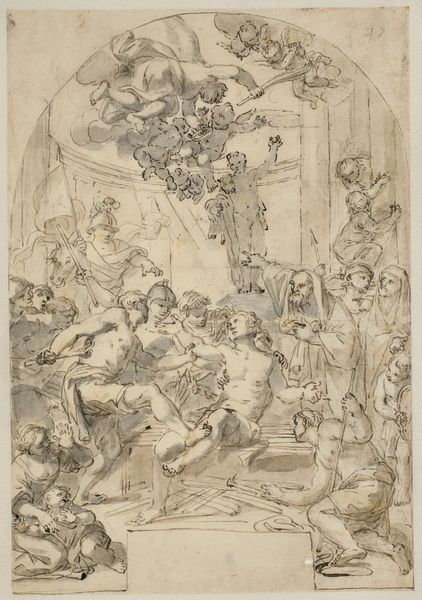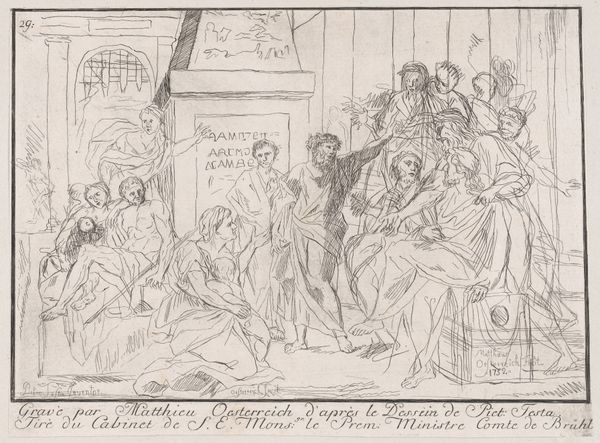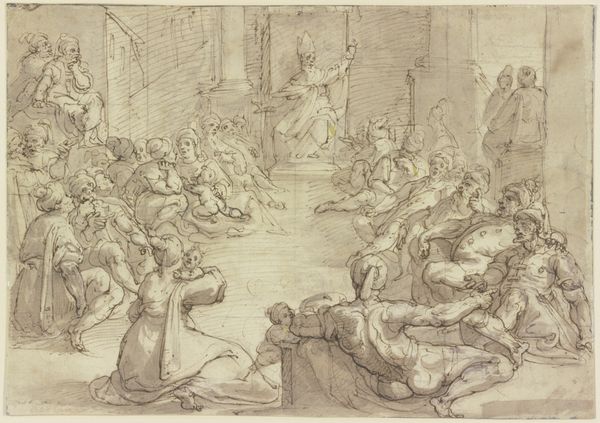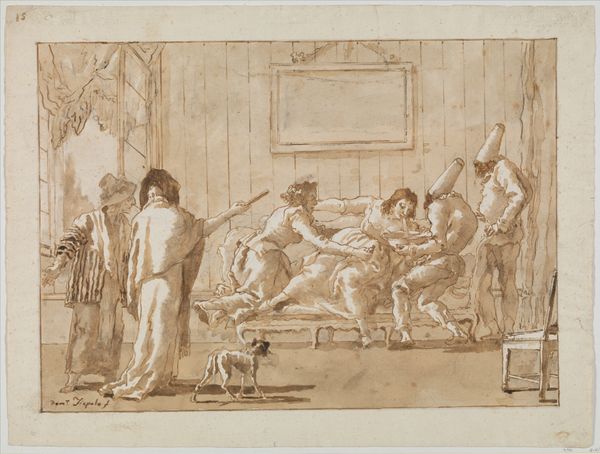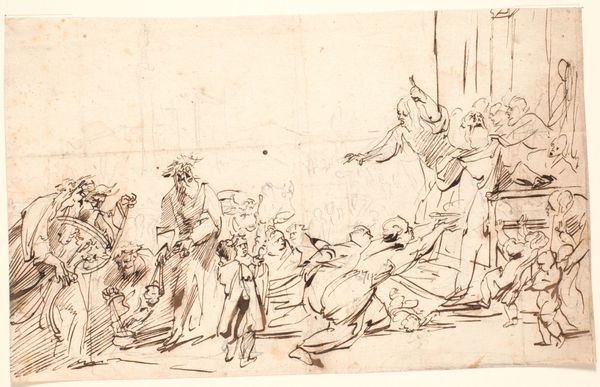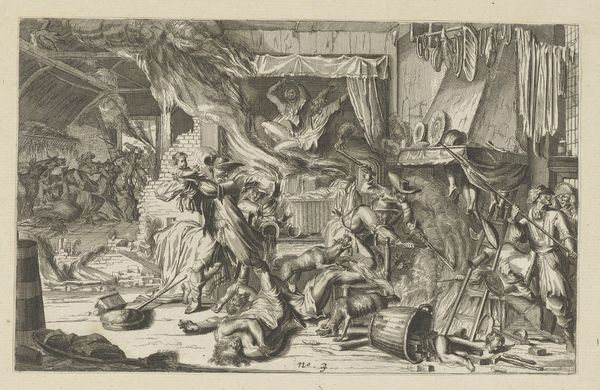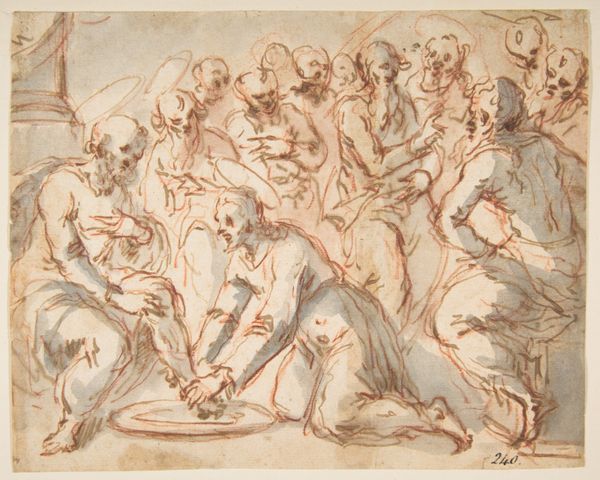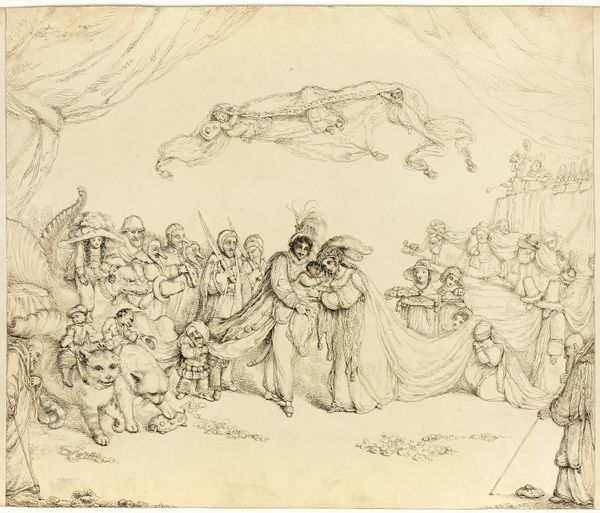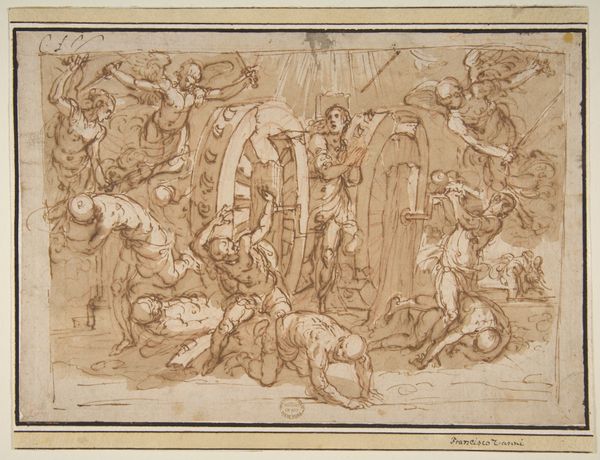
drawing, red-chalk, ink, chalk
#
drawing
#
baroque
#
red-chalk
#
figuration
#
ink
#
chalk
#
14_17th-century
#
history-painting
Copyright: Public Domain
Editor: Here we have "Christus reinigt den Tempel," or "Christ Cleansing the Temple," a drawing made circa 1645-1650 using red chalk and ink. The chaos jumps right out, the expulsion of people, animals… what can you tell me about this work? Curator: Look at the production of this drawing: the layering of red chalk and ink suggests a laborious process of revision and refinement, but note also the accessibility of the materials. Chalk, ink, and paper were relatively common, signifying a broadening artistic practice, almost a democratization of art creation. Editor: So, it's not about precious metals or fine oils. It is about accessible material. Curator: Exactly. How does that inform your reading of the image? This scene depicts a direct confrontation between spiritual authority and commercial activity, between religious space and the marketplace. Prestel, here, shows this event in accessible terms. Editor: The way it is sketched adds to that. It almost feels journalistic. How much do you think the rise of merchants had on shaping art? Curator: Massively. Remember that during this time, there was growing capitalist activity and a shift in social dynamics. Art responded by looking at materials more sculpturally and texturally as a reflection of labor in a more real sense than just religious icons of ethereal beings, don’t you think? Editor: Absolutely, that makes so much sense. It connects to broader economic shifts. Seeing art through that lens makes me see so much more depth in everyday artistic decisions. Thank you. Curator: My pleasure. Analyzing art with focus on labor is not just revealing, it is imperative in a consumer-driven culture.
Comments
No comments
Be the first to comment and join the conversation on the ultimate creative platform.
